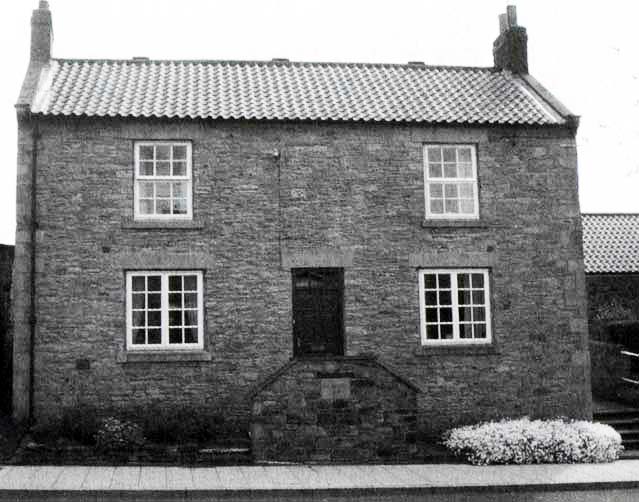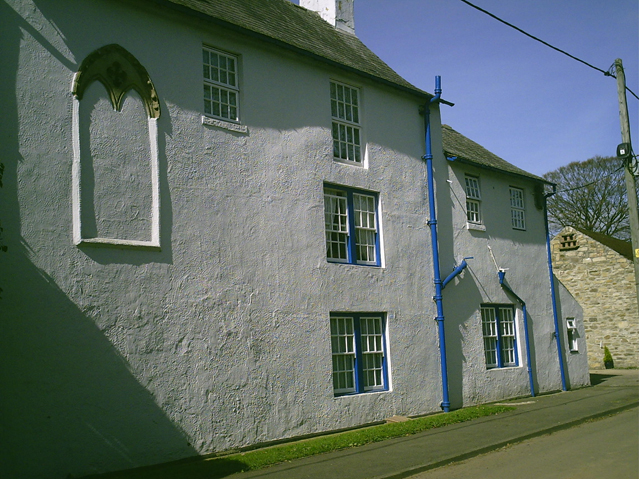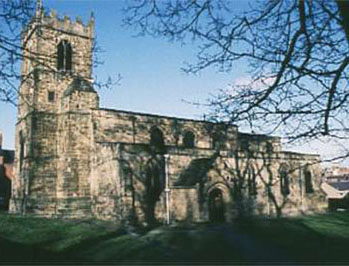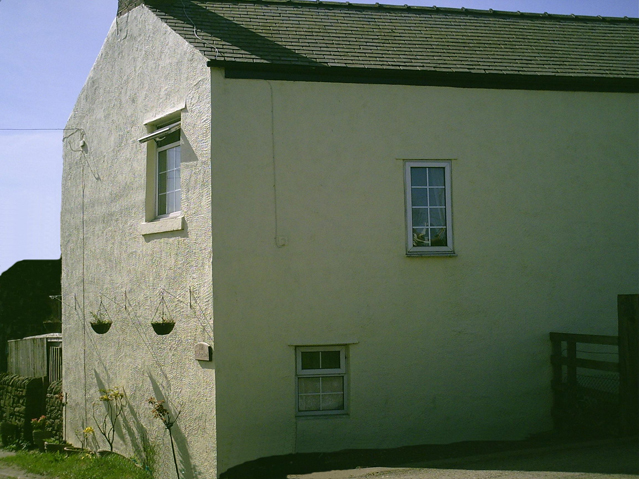PETER PEARSON 1788 -1876
Peter Pearson was the second son, and fourth child to Peter and Mary Pearson, probably being born between April and June 1788 in the old Anglo - Saxon village of Witton Gilbert. At the time of his birth, the village was an agricultural area with farms scattered here and there, with a population of about 300 persons. The village itself consisted of a medieval road known as Front Street, and this road, as well as the parish church of St Michael and All Angel became a focus point, not only for Peter, but for the next two generations that followed his family line. Today, Front Street still has buildings that were standing in Peter's time, like Snook Acres Farm (built 1632), and in the 18th Century the village was part of a busy turnpike road, and a tollgate could be seen at the western end of the street, leading towards Norburn Lane. Towards the eastern end of the street is an area referred to as the Fold, where a market was held until the early 20th Century. Here, in Peter's time, rural produce was traded. With the expansion of the village, following the mining boom of 1839, coal was also traded at the fold. Peter's parents lived near here until both their deaths in 1841.


Snook Acres Farm - one of many surviving buildings that Peter saw between 1788 and 1876.
Peter was baptised at St. Michael's on Sunday 10th August 1788, one of fourteen baptisms that year. He was baptised by Richard Richardson, the Curate for the parish from 1780 until 1839. Inside the church is a plaque dedicated to Richard, who taught sermons at the church, every Sunday for 59 years without fail. He was also the Curate who read the marriage banns to Peter's parents prior to their wedding in 1781. The church of St. Michael lies to the south of Front Street along Coach Lane and is the original site of a Norman chapel dating from the 12th Century. St. Michael's only became a parish church in 1423, being largely rebuilt in the 1860s. Around 1154, the Leper hospital was built to the north of the chapel. It was however, forced to close during the reign of King Henry the eighth, and is now called Witton Hall.

The old Leper hospital, built in the 12th Century, and closed in the 16th Century by Henry the eighth.
At the turn of the 19th Century, Witton Gilbert Township was small, with a population of only 369. The market was of course quite important for the welfare of the village, but everyone pulled their weight, and it was not unusual to see women of the period building roads. Peter himself helped with the autumn harvest on the local farms, eventually gaining employment as a husbandman. He was to remain in the farming industry, on and off, over the next 20 years or so. He was aged around 25 when he began courting Jane Nixon, three years his senior, who's parents, Joseph and Hannah Nixon were resident at nearby Fulforth Farm. Evidently, Peter Pearson and Jane Nixon were not married when their eldest child, Sarah Pearson was born in 1818, the latter being baptised at
St. Michael's on 25th October that year. At this time, records show that Peter was indeed employed as a husbandman, but there is no indication as to which farm in the area he may have worked at. They did eventually marry on 17th March 1823 at St. Margaret's Church in Durham City.

Right – St. Margaret’s Church,
Durham City.
By the mid 1820s however, Peter ceased to work in farming briefly, and instead, took up the post of Inn Keeper at the White Smocks Posting Inn, which was situated on the old Al road to Darlington by all accounts. When the Inn ceased to be of permanent use, Peter returned to Witton Gilbert and lived at Fell House which still stands opposite the entrance to Fulforth. The 1828 trade directory for Witton Gilbert lists him as a Farmer and Waggoner, residing at Fell House.

Fell House, pictured in 2011. Peter Pearson lived here in 1828.
On 22nd July 1828, at ten O'clock in the morning, Peter Pearson found himself facing a bankruptcy trial at Durham City Court House along with 11 other persons. The case to be heard was for the Relief of Insolvent Debtors, and was punishable by a prison term. The Prison had been built in 1824. As there were no police stations as such, it was the landowners who acted as justices of the peace in their own districts, holding sessions of court once per week for law breakers. From 1714 until 1832, landowners really ruled England. We know from a headstone in St. Michael's that Peter did not live at Fell House in 1844, as a family named Turner lived there then.
1841 was probably a time of sorrow for Peter, as he attended both funerals that year of his parents at St. Michael's. His mother had died in the March, followed by his father in the November. As Peter entered the church on the day of the funerals, he would be greeted by garlands of flowers, fastened to loops, which held slips of paper bearing his parent's names. This did not occur at Peter's own funeral in 1876, as the practise had ceased 3 years previous. It is estimated that over the course of his life, Peter Pearson attended approximately 15 - 20 family funerals.
Peter and Jane were the parents of three children altogether. Apart from Sarah, there were Peter Pearson (1823 - 1907) and Joseph Thomas Pearson (1826 - 1862). In 1861, Peter senior lived at 34 Front Street in Witton Gilbert. Sadly, Jane had passed away in the winter of 1857, being buried on 7th December that year in an unmarked grave. Peter worked as a Woodman during the spring of 1861, but was to retire by 1870. The 1871 Census gives his official trade as that of Retired Farmer'. Also living with him in 1861 was his daughter, Sarah and her first born illegitimate son, John Brownless Pearson (1838 - 1904). The latter was the eldest of four grandchildren to Peter.
During his lifetime, Peter Pearson saw many changes in Witton Gilbert, from those early rural trades to the 19th Century mining population boost, mainly to do with the opening of the Victoria and Charlaw Collieries in 1839. Also with this boost, came the village public houses, of which, in the 1800s, Witton Gilbert boasted six in total along the Front Street. Two Methodist chapels were also built in this Century and a National School was erected in 1845. As the 1860s progressed, Witton Gilbert boasted more than 2000 inhabitants.
In his later years Peter developed an illness called Gangrena Senilis, his official cause of death, and is thought to have died at 34 Front Street. He was buried in St. Michael's, in an unmarked grave on 11th June 1876, having died three days earlier aged 88.
The offspring of Peter Pearson and Jane Nixon
JOSEPH (THOMAS) PEARSON 1826 - 1862
Joseph Pearson was the third child to Peter Pearson and Jane Nixon, being born in 1826 at Witton Gilbert. He earned a living as a herdsman, and later as a woodsman, after 1861. He may actually have taken over his father's business, but this is as yet uncertain. Joseph shows up as living with his brother, Peter, in 1861, but is thought to have died in April 1862, at Witton Gilbert. He possibly shows up as being buried on 19th April 1862.
PETER PEARSON 1823 – 1907 & SARAH PEARSON 1818 - 1891
See P Pearson 1823.